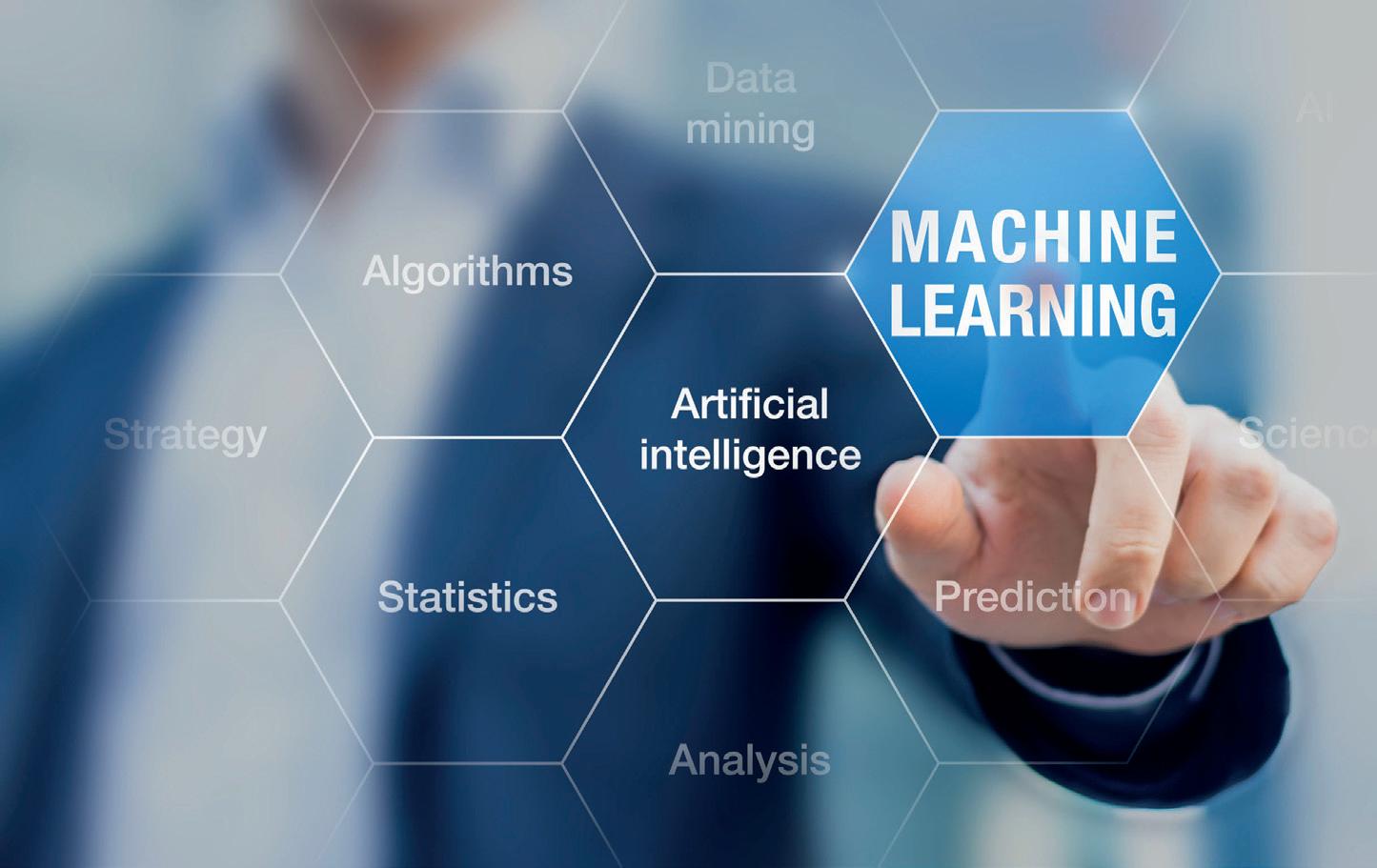
10 minute read
DRIVING LEARNER ENGAGEMENT IN A WORLD OF UNKNOWNS
Drive learner engagement in a world of unknowns
As a result of COVID-19, companies are exploring technical and non-technical pivots. These may include spending shifts to enable remote work for an extended period, increased focus on cybersecurity, expanded mental health and wellness programs, and enhanced personal safety measures.
Advertisement
How will companies successfully pivot to a digital learning environment that is engaging and delivers sustainable outcomes in a world full of variables and unknowns, while also keeping costs and complexity under control? When it comes to engaging your people effectively in today’s uncertain environment, here are some approaches that can help:
1. Connect learning plans to each learner’s short and long-term career goals
Historically, personal growth was the number one motivator for learning. Now, our user base identifies delivering results in their current role as their number one motivation, while the second biggest driver is preparing for their next role in the organisation. This shift from personal interests to training that impacts their performance implies that today’s learners are working hard to deliver business results and influence outcomes.
Develop a clear connection for your people between what they are learning and their current or future job role. This motivates them to dedicate time and attention to their development. Next, ensure they can easily find assets that help them drive results quickly, and more importantly, apply what they are learning to their daily work. of pride. Still, long before COVID-19, digital badges became a proven method to motivate and engage learners. The power lies in their portability, allowing learners to attach them to their online profiles, while also offering a digital history of skills that the company can reference as well.
Allow your people not only to reach milestones but also to spread the word. Empower your learners to cultivate their personal brand and proudly showcase their expertise among colleagues, peers, managers, and social media networks. Encourage learners to share their accomplishments across digital environments in a way that is progressive, personal, and verifiable.
3. Enable learners to spend more time honing their skills, and less time searching for the right content
Success amid a global pandemic requires a level of multitasking and agility previously thought unimaginable. Engaged learners develop the habit of maximising their time with learning that fits into the cracks of their calendar. To support this, learners need a clear starting point, as well as guidance on where to go next to achieve their goal.
Personalisation is a critical element of an engaging learning experience. To avoid information overload, and to help your people identify Point A, look for opportunities to suggest curated content that individual learners are likely to find meaningful and relevant. Next, promote continuous learning by offering additional suggestions based on the learner’s activity and the activities of their peers. As learners refine one skill, this is how they will be enticed to develop a new one.
2. Offer meaningful, portable recognition for individual accomplishments
Traditionally, learners who completed training programmes displayed framed certificates of achievement as a source the employee who routinely listened to audiobooks while commuting home in the evening. With so many offices still closed, that commute, and thus learning window, has vanished. Meeting learners where they are today requires an acknowledgment that the cracks in the calendar available for learning are even smaller than they were pre-COVID-19.
In addition to AI-driven content recommendations and mobile experiences, provide your people with learning opportunities that are not merely adjacent to their daily responsibilities but embedded within their workflow. This environment brings the notion of immediate application to a new level.
4. Meet learners wherever they are
Of course, people were busy and short on time long before the pandemic, but today’s reality amplifies the need to capably manage professional and personal responsibilities simultaneously. Imagine
Where to Go from Here
The most insightful and applicable content in the world is only useful if learners can discover and consume it meaningfully. Learner engagement is an essential element of a successful pivot to a digital learning environment that delivers positive outcomes.
Organisations that adopted Skillsoft’s newest learning platform, Percipio, have seen a dramatic increase in learner engagement and report a higher confidence in skills and abilities applied on the job. To learn more about how the Percipio platform can improve learner engagement at your organisation, please request a demo.
About the Author
The future of learning in the era of capability-led transformation
It was 11:00 am on December 15, just one week away to Christmas. I turned on the notebook and connected to the company’s VPN and then went straight to my most opened app “Microsoft Teams”. Yes, at Siam Commercial, Bank, we are still in a “working anywhere” mode, and we do all our work online.
This was almost the end of the year but one last thing to do for this year is sharing the plan on what to do next year. “Ok, I’m online now,” is the company’s annual strategy session. Each of the business units need to share their strategy and business plan for next year to the presidents and top executives. For us the session went well and we are also excited with the questions asked by the president.

I believe this is the most popular question from top executives right now, as everything is moving really fast and we do not have the luxury of time as we used to in the past. We are now entering the new normal world, phase I (2020). And the way we entered this new normal was so sudden, no one was ever prepared for it. We also do not know when or how phase II will begin.
Learning before 2020
The focus then was more on preparing the workforce for the future. Data analytics, design thinking, agile development programmes were the most popular topics then. Programmes were more about learning and development with more of practicing and less teaching. The use of online learning and some AI-based learning were picking up but was nowhere near what we really expect to have from learning.
In summary, we had more time to spend on learning and start using technology to help make learning more engaging and less expensive. learnings that are embedded in the flow of everything, for example, work and life. This means no more spending of time in a classroom or a 2-days workshop.
Lastly, one very important part of the future of learning will see the move away from the focus on the skills, to the focus on business performance or career growth. It is likely that the next conversation I will have with my top management in the near future will be based on an entirely new and different context.
Learning after 2020
The focus is still preparing workforce for the future, but we are faced with limited time. Everything needs to be compressed and we are working with very limited budgets. And it is not about learning anymore; it is more about business outcomes and workforce mobility.
In summary, we have almost no time to spend on learning but still need to get people to deliver the business outcomes and ready for the future.
The future of learning
Personally, I believe that the future of learning is “flash or invisible learning” and we might not have learning and development functions (L&D) in the company any more.
Flash learning is equivalent to a “super small bite” using personalised learning (AI) technology. When new things emerge, people tend to grasp a quick bite in terms of learning and applying news skills within a day, or a week at most. They also use technologies such as virtual reality (VR), augmented reality (AR) and XR (extended reality to help accelerate the learning and skills adoption.
Invisible learning includes all the
About the Author

AEK USSIVAKUL is Senior VicePresident, Learning Platform and Data, Siam Commercial. He will be making at presentation at Learning Technologies Asia 2021 on March 23 at 11am (SGT).

‘Superpower’ your talent during uncertainty
Aglobal pandemic. Mass remote work. A US election like no other. Racial unrest and protests. Climate disasters. 2020 packed decades worth of upheaval into one year.
Alongside these events, business and work have gone through a seismic shift, and what we have learnt is that uncertainty is the only certainty.
HR teams know this all too well. They have been on the front line and are critical to managing the health and wellbeing of their most valuable asset, people.
The problem with all this uncertainty, however, is that good business requires planning. Typically, we prepare for the future through a scenario-based approach, including business or operational models based on historical data and other exogenous sources to make predictions about the future, and how to mitigate risk. In most cases, known risk.
But what if the future holds something no one could fully foresee? What if another 2020 rolls around sooner than we might think?
Building an adaptable workforce
We tend to think of reactive and proactive as opposites. The goal, as organisational leaders, we have been told, is to be proactive.
But, things are still evolving and changing fast – not just in the current situation, but due to endless advances in technology, globalisation, organisational structure and competition.
Rather than trying to model every possible scenario and have a plan for it, the best performing organisations are focusing on building an adaptable workforce that can quickly react to known and unforeseen changes. They also understand the human element of change and know how to help their teams remain healthy and centred. They create teams that are adaptable, agile and resilient.
Making employees your superpowers
To build a workforce of this nature is not something that can be engineered overnight by hiring the right people.
Digital transformation has introduced significant skills gaps, and the pandemic has worsened these. While unemployment is rising, specialised skills are only getting harder to find.
Research from PwC suggests that companies need to make existing employees their ‘superpowers’, spending more to reskill and upskill from within.
To do this requires a complete learning and talent solution that transparently communicates across the organisation and can create personalised journeys, both for individual employees, as well as mapped to the future of the organisation.
Focus on key impact areas
Importantly, a talent solution focused on growing employee ‘superpowers’ needs to address three key areas:
Employee engagement: Facilitated via paperless onboarding, self-guided learning tools, social collaboration tools and continuous supervisor feedback. An employee who is in control, motivated to learn and feels supported by their company both professionally and personally is far more likely to stay and be ready to help when problems arise.
Compliance and risk mitigation: With online surveys and assessments, companies can measure behaviour and processes and identify possible red flags among employees quickly.
Team performance data: Talent Development essentially is visibility. It is important to provide managers and employees with access to key measures that give a bird’s eye view of a team, including data on employee and manager performance. This helps in developing insights for creating a balanced working environment within the organisation during crisis, with timely reports and analytics that provide quick actions and ensure proactive measures for supporting employees appropriately. A system that also includes coaching for managers is essential in guiding them so that issues can be dealt with effectively.
Ultimately, a business can only endure what its people can endure. By and large, people want to give their best and be great at their jobs. By setting them up with the tools to do their jobs well, helping them grow professionally, paying attention to them as people, and equipping them with the ability to gain new skills at pace, an organisation will be prepared for any crisis.




